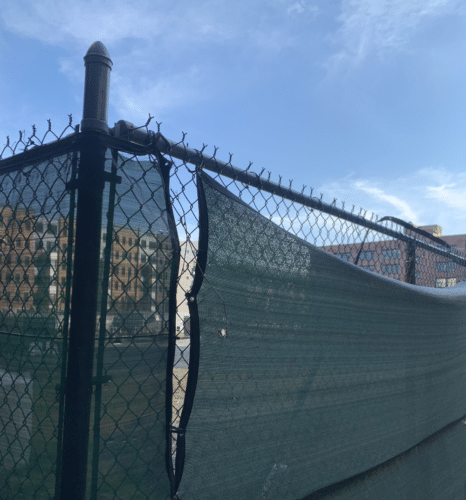An ongoing project called 800 Monroe has been a point of contention for a while. However, regardless of what the future of the site looks like, it’s overshadowed by a rather unpleasant side effect: a rubber-like burning smell — a smell that has been present off and on since 2018 and has many residents concerned.
Update as of 1/5:
If concerned about this, NJDEP has a hotline, so if you have any questions or concerns, please reach out to 1-877-WARNDEP. DEP’s hotline is 1-877-927-6337. The 800 Monroe site is identified by Program Interest Number 13531.
They have instructed residents that each time the smell is reported, however, they treat it as a separate incident so the more residents call, the more attention will be in this area. So if you’re concerned, make sure to reach out — and continue to ask questions.
People — both passersby and local residents alike — have been having a difficult time avoiding the smell that emanates from the currently under-construction project. In fact, the unfortunate odor has caused many complaints, as the site is next to the Monroe Center filled with hundreds of businesses, Shoprite, and numerous residential buildings and daycares. So many, in fact, that the City of Hoboken released an official statement in 2018 about it on its government website — which was covered on local news outlets and of course, Twitter.
What the City Said
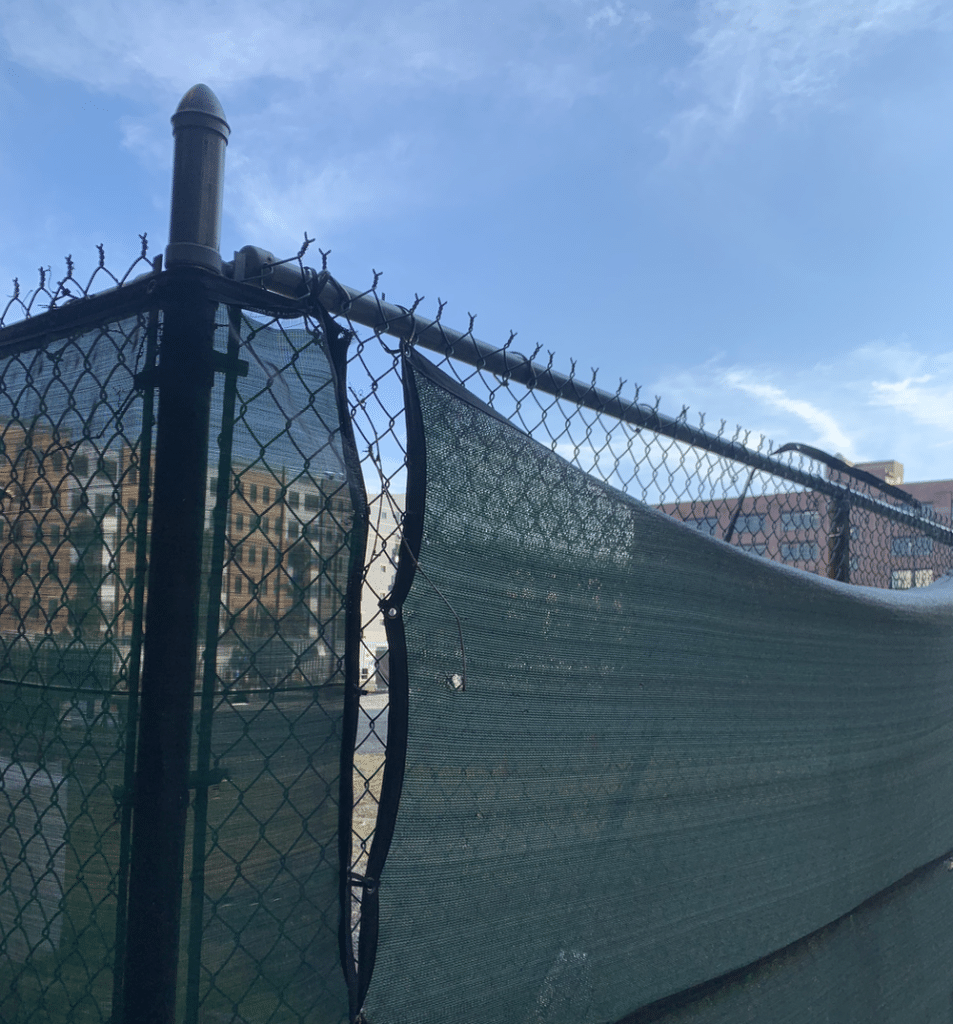
According to the City who released a statement on October 1, 2018, groundwater remediation is the cause of the odor. Groundwater remediation is the process of treating polluted groundwater by removing the pollutants themselves and converting them into other “harmless” products. But what does that mean?
If the term sounds somewhat familiar, you may be thinking of the lead remediation process that’s currently happening at over 30 Jersey City schools after lead was detected in the school water fountains this year. But in this case, it’s Acetone and TCE {trichloroethylene is a halocarbon commonly used as an industrial solvent that has links to cancer}.
According to the official City of Hoboken website, the Licensed Site Remediation Professional for the 800 Monroe Street project confirmed remediation activities resumed on Thursday, November 1, 2019. {Hence the more recent complaints about odors, though these have been happening/witnessed since earlier this summer by many residents. In fact, residents in some buildings have reported to Hoboken Girl they’ve been smelling and seeing things at the site since late 2018 – so much so, that it was reported on the City’s website after local resident complaints.}
The City’s website states:
“A layer of concrete was added directly over the remediation area. It was then expanded so that edges of the original remediation area are now also capped with concrete. Additional vapor extraction points have been added that will enhance the capture of vapors and return them to the remediation system. Lastly, a sealing foam has also been applied to the treatment zone and surrounding area.
The Hoboken Health Department will monitor the site when remediation activities resume. The LSRP is confident that the implemented mitigation measures will prevent further odors from escaping the site. In the unlikely event that site odors are identified, the contractor is prepared to halt remediation again by returning the remediation system to an idle mode and initiate further investigation.”
But, they said it would end in 2018, and it’s now January 2020, and smells are still being emitted daily.
This is pulled directly from the website:
“Remediation activities should be completed by the end of 2018.
The City will keep the community informed with any updates. If you have any questions, please call the Hoboken Health Department at 201.420.2000 x5205.”
See the full City releases here and here from 2018.
See More: Hoboken + Jersey City Tap Water: A Closer Look
Environmental Services Has Also Weighed In
The Hoboken Girl team also reached out to Jennifer Gonzalez, Director of Environmental Services and Chief Sustainability Officer, of the City, last month.
“Groundwater remediation continues at 800 Monroe Street. There may be periodic smells depending on the wind, but the remedial action techniques are both state of the art and being conducted in compliance with an approved remedial action work plan,” Gonzalez told Hoboken Girl via email.
“The method for remediation, which involves heating the groundwater to high temperatures, is the most expeditious remedial action with the least odor possible. Any other remedial technique would result in hauling of excavated soil, which would take longer with a stronger odor.”
According to Gonzalez, engineers from Potomac-Hudson Environmental are inspecting the site continually in attempts to address and mitigate the odor.
“They were using an air neutralizing spray to reduce the odor, which unfortunately became a strong odor itself, and has since been reduced,” Gonzalez adds. “They have also submitted a request to modify their air permit to extract more air from below the treatment cap because improved air circulation should reduce the odor.”
Gonzalez also confirmed that Potomac-Hudson Environmental confirmed remediation should be completed within 60 days, allegedly.
Potomac-Hudson Environmental Is Monitoring the Situation
Hoboken Girl and 800 Monroe Street area residents in neighboring buildings also reached out to David Draper, the Licensed Site Remediation Professional at Hudson Regional Health Commission at Potomac-Hudson Environmental.
Draper said to us via email, “The current owner of the property is remediating groundwater contamination that was caused by former industrial owners of the site and that has existed for many years prior to the new ownership. Active remediation on-site is expected to be completed by the end of the year, with a demobilization of the system to follow in early 2020.”
Not sure what “demobilization” refers to? Us, either.
According to Draper, demobilization will include the removal of the above-ground piping, the heaters within the wells, and the treatment trailers from the site. “The asphalt cap would remain until the site has cooled down and then removed at an as-of-yet-undetermined future date,” Draper says.
According to Draper, the smell has to do with the use of an air neutralizer. “We believe the primary smell noted from the site by others is related to the air neutralizer… A cinnamon-like odor has been reported. But other residents are still reporting the burnt rubber smell, now mixed in with a cinnamon-like odor that works to “mask” it.
“A ‘burnt earth’ or rubber-like odor was previously reported, which may be related to the thermal remediation system heating the subsurface peat layer. All of which is non-toxic and non-hazardous,” Draper adds, though he could only provide a safety data sheet and did not respond to questions about what the actual smells were.
So, we met with hazmat inspector Mike Wallace, who works with the county outside the site — and had been called to the site in 2018 to deal with the previous year’s calls for concern. He had a slightly different story on what the chemicals were.
He shared a bit more about the details, which seemed to differ from what Draper shared.
“TCE and acetone is [sic] in the ground, and they’re removing that using a groundwater heating process – in doing that it volatilizes the ancient bog below.”
Those terms, defined:
TCE {trichloroethylene}, according to the NIH website, is a colorless, volatile liquid that is produced in large volumes for commercial use. It is primarily used in two ways — to make hydrofluorocarbon chemicals, especially refrigerants, and as a solvent to remove grease from metal parts, although this use is declining. Additionally, it is used for spot removal in dry cleaning operations and is found in some aerosol cleaning products that consumers may purchase for home and auto maintenance. Here’s more info on this compound via the NIH — which has been linked to cancer.
Acetone, according to the CDC, is directly quoted as a chemical that is found naturally in the environment and is also produced by industries. Low levels of acetone are normally present in the body from the breakdown of fat; the body can use it in normal processes that make sugar and fat. Acetone is a colorless liquid with a distinct smell and taste. People begin to smell acetone in air at 100 to 140 parts of acetone in a million parts of air (ppm), though some can smell it at much lower levels. Most people begin to detect the presence of acetone in water at 20 ppm. Acetone evaporates readily into the air and mixes well with water. Most acetone produced is used to make other chemicals that make plastics, fibers, and drugs. Acetone is also used to dissolve other substances. And yes, it’s what people use to remove their nail polish.
This link from the CDC reports that “Acetone does not cause skin cancer in animals when it is applied to their skin. We don’t know whether acetone would cause cancer after breathing or swallowing it for long periods, because no tests have been done. The Department of Health and Human Services and the International Agency for Research on Cancer have not classified acetone for carcinogenic effects. The EPA has determined that acetone is not classifiable as to its human carcinogenicity.” Read more here.
Wallace did not appear concerned about levels and assured Hoboken Girl that they were looking into it, but it was helpful to note the additional materials that are being emitted from the groundwater in that area.
Read More: Hoboken Bans Styrofoam in Unanimous City Council Vote
The Data
They’re now spraying a ‘neutralizer’ to mitigate the smell.
Draper shared with the Hoboken Girl team that the air neutralizer they are spraying is non-toxic and biodegradable and that after remediation is completed, the site owner is hoping to redevelop the property in accordance with local zoning. He would not provide details of what the “non-toxic” remediation neutralizer was consisting of, which creates questions about the ingredients in the neutralizer.
Draper says, “We had provided an SDS {Safety Data Sheet} for the neutralizing agent to the Hudson County Regional Health Commission.” Nothing was provided regarding the Acetone and TCE compounds.
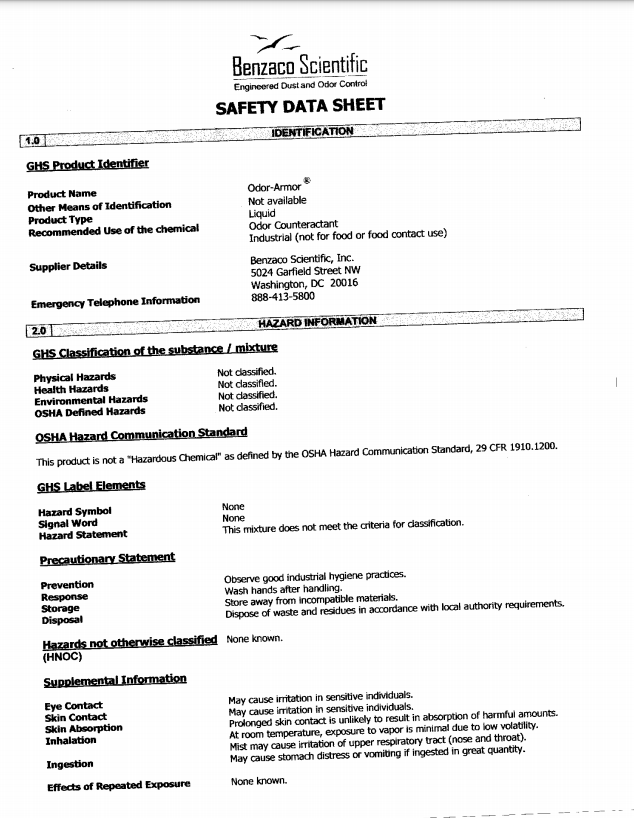
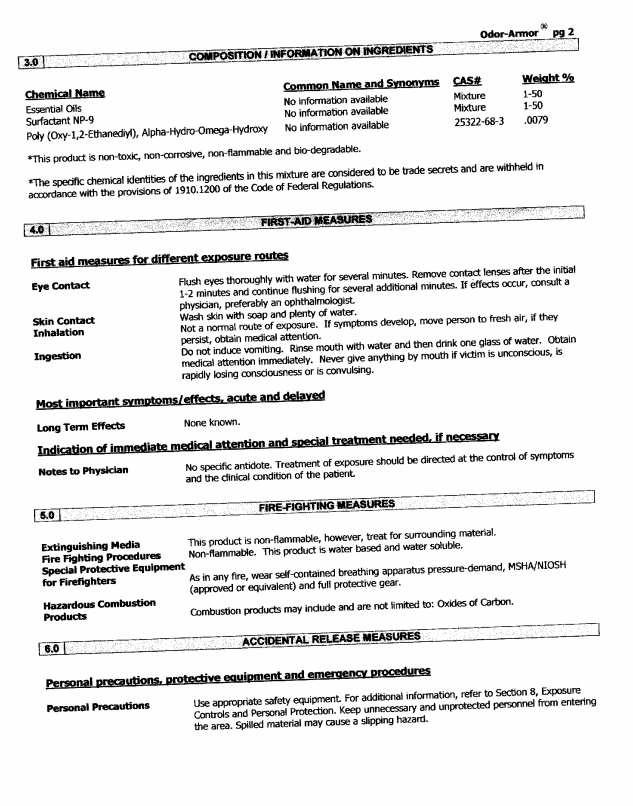
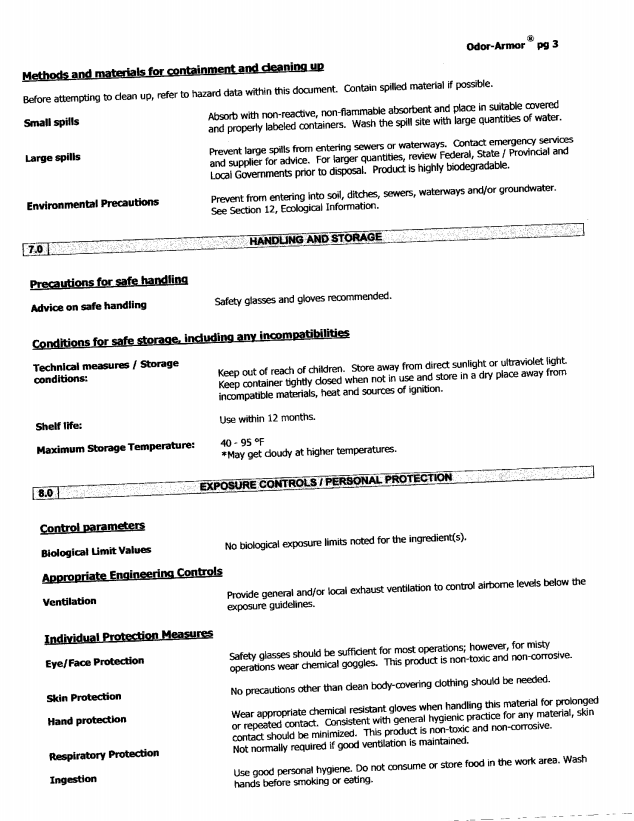
{Screenshots of the Safety Data Sheet provided by David Draper}
Other FAQs:
Is the air residents are breathing toxic?
How exactly did Potomac-Hudson Environmental determine that the air is non-toxic and non-hazardous? That wasn’t answered by Draper, who just repeated that the smell was organic and non-hazardous.
Okay, so, what is this air that residents are breathing?
Speaking of non-toxic and non-hazardous, Hoboken Girl also wanted to know if residents should be concerned about the air they’re breathing in, as there are schools, daycares, the light rail station, residential complexes, and the 720 Monroe building with hundreds if not thousands of people in the area circling through — many reporting the smell.
Draper said via email, “The treatment system has been approved and permitted by the New Jersey Department of Environmental Protection, and the airflow through the system and around the site has been regularly tested and found to be non-hazardous.”
So, why is the smell still there? What are the long-term effects?
If you’ve been near the project recently, you may have noticed that despite all of the efforts Draper and others have detailed via email to us, a smell still lingers, and while it’s being reported as “safe” — the results are still unclear, as no discussion of long-term effects were noted or addressed by Draper.
“As noted in our previous response to you, we believe that the organic peat may give off this odor as it is heated during the treatment process,” Draper says. “We have employed measures to eliminate odors by increasing the areal coverage of the site with the asphalt cap and increasing withdrawal of air with our extraction system. We are confident that our treatment exhaust stack is operating within NJDEP air permit limits.”
Confidence is relative, as many residents are still disputing that the smell is “organic” — as it has a very noxious odor that does not seem to naturally occur in the environment, and the hazmat inspector Mike Wallace seemed to expand on the fact that other compounds were there.
A hotline to call, if you’re concerned:
NJDEP has a hotline, so if you have any questions or concerns, please reach out to 1-877-WARNDEP. DEP’s hotline is 1-877-927-6337. The 800 Monroe site is identified by Program Interest Number 13531.
They have instructed residents that each time the smell is reported, however, they treat it as a separate incident so the more residents call, the more attention will be in this area. So if you’re concerned, make sure to reach out — and continue to ask questions.
It was said that all remediation efforts would be completed by the end of 2019, but a few days into 2020 and a smell still there, the situation remains to be seen and we will keep you updated.
Got a news tip, question, concern about this?
Let us know — email us at hello@hobokengirl.com! We appreciate it.

